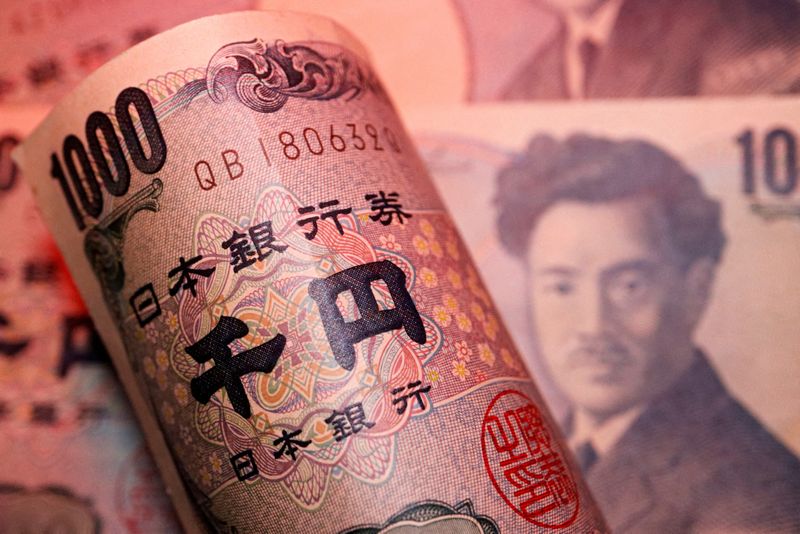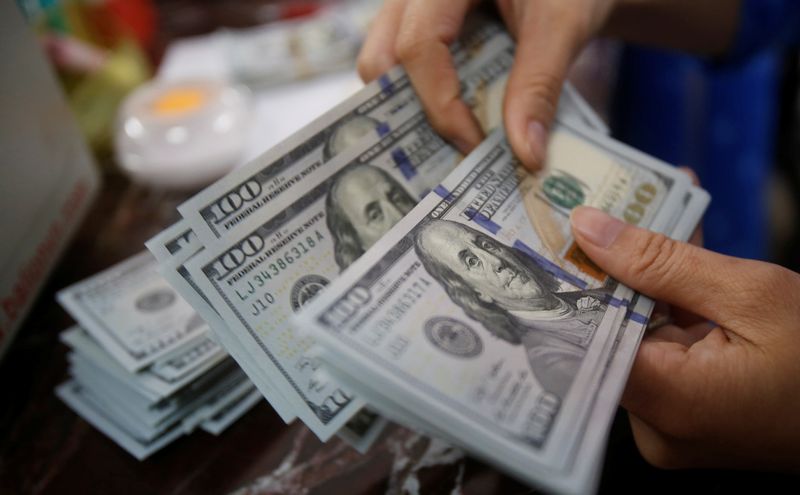
By Alden Bentley, Harry Robertson and Kevin Buckland
NEW YORK/LONDON/TOKYO (Reuters) -The dollar edged up on Monday as traders braced for a busy week of news featuring Wednesday’s policy decisions by the Federal Reserve and Bank of Japan, followed by the July US employment report on Friday.
The yen was little changed following the Japanese currency’s strongest weekly rally since late April on the back of shifting interest rate expectations and a stock market selloff.
The dollar index, which measures the currency against the euro, yen and four other major currencies, rose 0.27% to 104.64. The euro slipped 0.41% to $1.08115, while the pound was down 0.77% to $1.2841.
Dollar/yen was last up 0.17% at 154.05, reversing an earlier decline of as much as 0.49% to 153.04.
Markets have been focused on the surge in the yen over the last week, with rising speculation of a BOJ interest rate hike this week helping buoy the currency.
“This is an incredibly jam-packed week,” Brown Brothers Harriman Global Head of Market Strategy Win Thin said in a client note. “The FOMC is expected to keep rates on hold Wednesday but open the door for a September cut. Meanwhile, the July jobs report will remain consistent with a labor market coming into better alignment whilst still supporting consumption.”
Thin said the yen will likely struggle to gain further upside momentum, with the BOJ likely to deliver a dovish hike at its meeting on Wednesday.
The U.S. Federal Open Market Committee (FOMC) is widely expected to leave rates unchanged this week, but to cut them by a quarter point at the following meeting in September.
The Fed decision poses a risk to the dollar/yen pair, said Kristina Clifton, senior economist and chief currency strategist at Commonwealth Bank of Australia (OTC:CMWAY).
“Any hints of loosening by the FOMC could pull USD/JPY down significantly, but a hawkish FOMC will probably have little impact,” she added.
MARKET MOVES
Data released on Friday showed investors have sharply cut back on their bets against the yen, which was trading at a 38-year low at the start of the month.
“Sentiment remains fragile,” said Shinichiro Kadota, a currency and rates strategist at Barclays in Tokyo.
Ultimately, “U.S. equities are still the key,” Kadota added, referencing the demand for safe-haven currencies like the yen seen during last week’s stock market rout. “Market moves have been led by U.S. equities, and we need to see if things stabilize there.”
Wall Street opened higher on Monday, coming off a volatile week that saw a deep two-day shakeout on worries about megacap earnings. The U.S. earnings calendar this week is populated with heavyweights including Amazon (NASDAQ:AMZN), Apple (NASDAQ:AAPL), Meta (NASDAQ:META) and Microsoft (NASDAQ:MSFT).
Investors were also wary of further geopolitical volatility, with Israel weighing a response to a deadly rocket strike in the Israeli-occupied Golan Heights which Israel and the United States have blamed on Lebanese armed group Hezbollah.
Currency traders also need to contend with the Bank of England on Thursday.
Sterling fell as investors looked towards the BoE meeting, where the market sees the odds of a first rate cut as a coin toss. British bond yields fell on Monday, pulling the pound lower.

Elsewhere, the Australian dollar was slightly lower at $0.6535, attempting to recover from Friday’s low of $0.65105, a level not seen since the start of May.
Leading cryptocurrency bitcoin advanced 0.75% to $68,743, receiving some support from positive comments from Republican presidential candidate Donald Trump, who told a bitcoin conference on Saturday that the U.S. must dominate the sector or China would.
This post is originally published on INVESTING.




